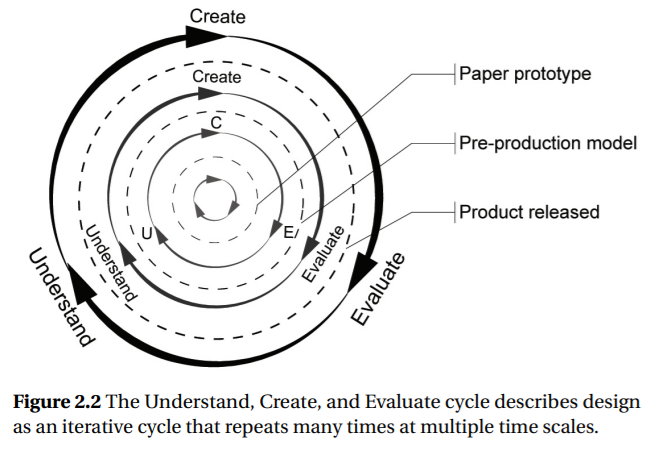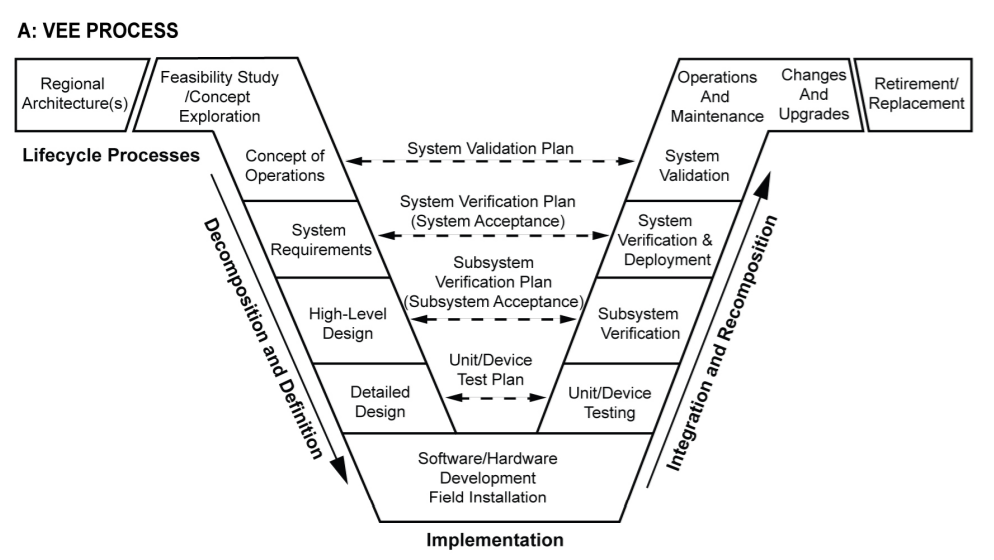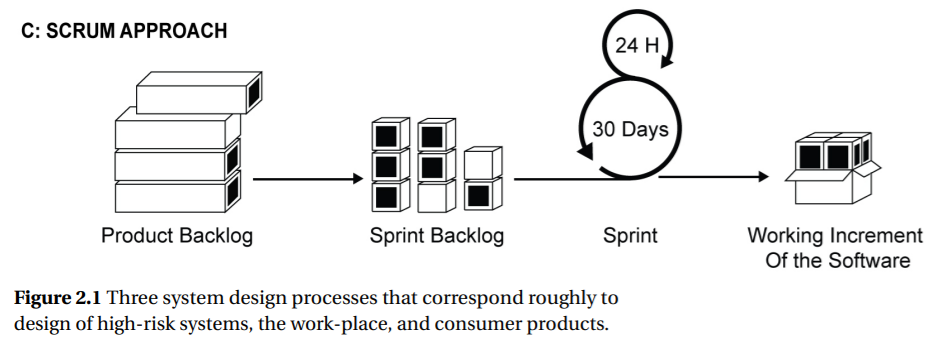2.3 How to Perform a Task Analysis
Most generally, task analysis is a way of systematically describing
human interaction with a system to understand how to match the
demands of the system to human capabilities. Task analysis is
a broad term that encompasses many other techniques such as
use cases, user stories, and user journeys. All of these techniques
focus on understanding the users’ goals and motivations, the tasks
and subtasks to achieve these goals, the ordering and timing of
these tasks, and the location and situation where tasks occur. Task
analysis consists of the following steps:
1. Define the purpose and identify the required data
2. Collect task data
3. Interpret task data
4. Innovate from task data
We describe this process as sequential, but in practice it is often
iterative. As an example a hierarchical task diagrammight be drawn
during an interview andmight be revised and adjusted as part of
the interview process. This diagram might be further refined based
on observations of work being performed. The observations and
analysis that make up a task analysis help focus on the activity
details that matter for the user. A deep, empathetic, and obsessive
understanding of these details is what makes designs succeed.
2.3.1 Step 1: Dene Purpose and Required Data
The first step of task analysis is to define the design considerations
that the task analysis will address. Because a task analysis can be
quite time consuming, it is critical to clearly define the purpose of
the analysis. Typical reasons for performing a task analysis include:
• Redesigning processes
• Identifying software and hardware design requirements
• Identifying content of the human-machine interface
• Defining procedures, manuals, and training
• Allocating functions across teammates and automation
• Estimating system reliability
• Evaluating staffing requirements and estimating workload
As an example, a task analysis for entering a car, adjusting settings,
and starting the engine could provide important information
to re-imagine the car key and create a new system for entering and
selecting vehicle settings. The task analysis could also be used to
define features of the interface to adjust settings, and could even
be used to define the content of the owner’s manual.
Both the purpose of the analysis and the type of task will influence
the information gathered. Tasks can be physical tasks, such as
opening the car door, or they can be cognitive tasks, such as selectingmusic
to listen to while driving after entering the car. Because
an increasing number of jobs have a large proportion of cognitive
tasks, the traditional task analysis is being increasingly augmented
to describe the cognitive processes, skills, strategies, and use of
information required for task performance. There are methods
specifically developed for cognitive task analysis [40, 41], but we
will treat these as extensions of standard task analyses, referring
to all as task analysis. However, designers should pay particular
attention to the cognitive components in conducting the analysis
if any of the following characteristics are present:
• Complex decision making, problem solving, diagnosis, or
reasoning
• Conceptual knowledge is needed to performtasks
• Large and complex rule structures that are highly dependent
on the situation
• Performance depends on memory of information that needs
to be retained for seconds or minutes
Whether the task analysis is focused on the physical or cognitive
aspects of the activity, four categories of information are typically
collected:
• Hierarchical relationships: What, why, and how tasks are
performed
• Information flow: Who performs the task, with what indications,
and with what feedback
• Sequence and timing: When, in what order, and how long it
takes to performtasks
• Location and environmental context: Where and under what
physical and social conditions tasks are performed
Hierarchical relationships
describe how subtasks combine
into tasks, and how tasks combine to achieve people’s goals. With
the car example, a goal is to keep the car secure, a task is to lock
the door, and subtasks include inserting the key, turning the key, or
press the lock icon on a keyfob. Moving up the hierarchy describes
why a task is performed—secure the car—and moving down the
hierarchy describes how a task is performed—turn the key/click
lock on keyfob. Describing the hierarchical relationships between
goals, tasks, and subtasks makes the reason for the many subtasks understandable. These hierarchical relationships help us focus
on the underlying goals of people and can prompt innovations by
identifying new and more efficient ways of achieving people’s goals,
such as securing the car using a keyfob rather than a key.
Y Hierarchical relationships
identify new ways of doing
things.
Information flow
specifies the communication between people
and the interactions between people and technology. This
information flow can also include stored information needed to
complete the task, such as knowledge and skills or information
on a display. With the car example, the flow of information might
include a signal to identify that the doors are unlocked. For some
systems, a complex network of people and automation must be
coordinated. In other systems, it may be only a single person and
the technology. However,most systems involve coordination with
multiple people. Defining their roles and their information needs
often identifies important design considerations that might otherwise
go unnoticed, such as how to get passenger preferred music
into the car.
Y Information flow helps specify
interface content.
Sequence and timing
describe the order and duration of tasks.
In the car example, the driver must first turn the key, then lift the
door handle, and finally pull the door open. Performed in a different
order, these tasks would not achieve the goal of opening the
door. In other situations, tasks could be performed in parallel. Task
sequence often determines howmuch time a set of tasks will take
to complete. Specific task sequence information includes the goal
or intent of task, sequential relationship (what tasks must precede
or follow), trigger or event that starts a task sequence, results or
outcome of performing the tasks, duration of task, number and
type of people required, and the tasks that will be performed concurrently.
Eliminating tasks, reducing their duration, or assigning
them to different people can make systems easier to use and more
efficient.
Sequence and timing specifies
efficient interactions.
Location and environmental context
describe the physical
and social world in which tasks occur. In the car example, important
location information might be the physical layout of the
vehicle interior that can make it difficult to insert the key to start
the car. Specific location information might include places people
work and the paths people take from one place to another, as
well as the location of equipment and the physical barriers such as
walls and desks. Location of equipment can greatly influence the
effectiveness of people in production-line settings. The physical
space can also have a surprisingly large effect on computer-based
work, as anyone who has had to walk down the hall to a printer
knows.
Physical layout can strongly
affect task difficulty.



